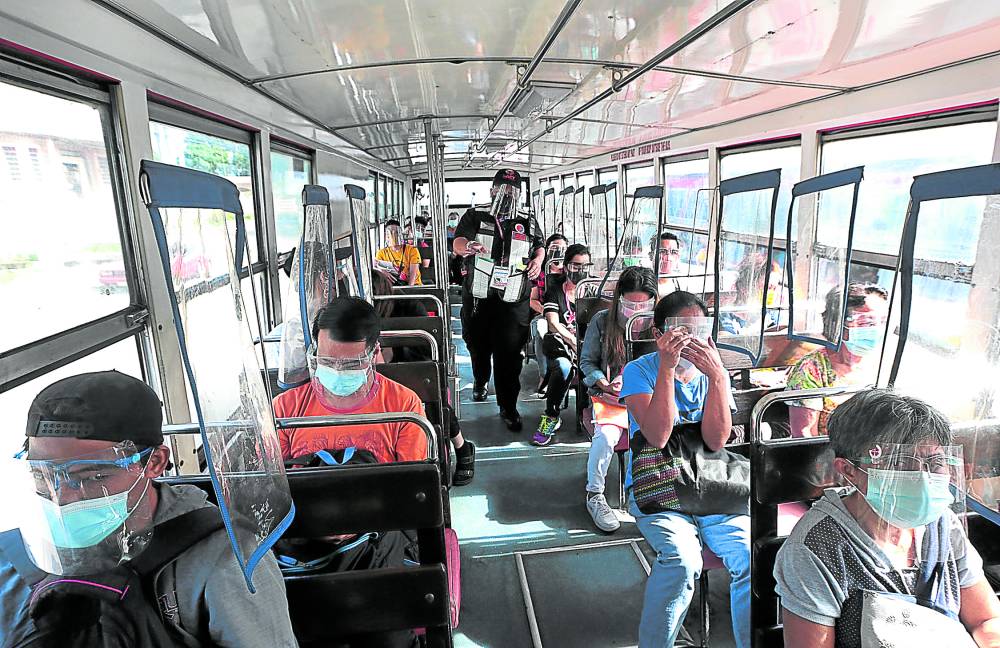
GRIG C. MONTEGRANDE/INQUIRER FILE PHOTO
The National Capital Region (NCR) is back to moderate risk level for COVID-19 transmission, after almost three weeks at critical level, the Department of Health (DOH) said on Friday.
“NCR is now at moderate-risk case classification from being at critical risk on Jan. 4 to Jan. 21. In addition, the average number of cases reported this week is 4.68 times lower than the peak in January (Jan. 8 to Jan. 14),” the department said in a statement.
It added that the average number of hospital admissions decreased from 6,204 around that time to 4,378 on Jan. 21 to Jan. 27.
But the DOH also noted “an average of 3,662 cases … reported daily this week—still higher than the 1,405 average daily cases on the week prior to the Omicron wave” at the start of the new year.
Meanwhile, according to independent pandemic monitor OCTA Research, NCR’s reproduction rate—or the average number of people who can potentially be infected by the coronavirus—fell from 0.63 on Wednesday to 0.52 on Thursday.
A reproduction number below 1 indicates transmission of the virus slowing down.
Virus case update
Friday’s national tally of 18,638 new infections was slightly higher than Thursday’s 18,191 and brought the national caseload to 3,511,491 since the pandemic began.
Calabarzon (Cavite, Laguna, Batangas, Rizal and Quezon) had the most COVID-19 cases among the regions at 2,379, followed by NCR with 2,211 and Western Visayas with 1,969.
The DOH said there were 231,658 active cases, of which 219,811 were mild; 7,055, asymptomatic; 2,971, moderate; 1,509, severe; and 312, critical.
There were 13,106 recoveries on Friday’s case bulletin, which brought total survivors to 3,226,032.
But there were 68 fatalities, which raised the death toll to 53,801. The DOH said there were 59 deaths in January, and the remaining nine were between March and September last year but were only reported on Friday.
The positivity rate was 34.6 percent—lower than the 35.2 percent on Thursday—and this was based on 62,671 who were tested on Wednesday.
Meanwhile, Health Undersecretary Maria Rosario Vergeire reminded the public to ensure proper ventilation in homes, workplaces and establishments “to allow the circulation of clean air indoors, which helps further prevent the spread of the virus.”
“Proper ventilation can be achieved by always keeping windows or doors open for fresh air to flow or putting an electric fan in front of a window for good air circulation. If the weather’s too hot to keep windows open, one can open it for a few minutes every hour,” she said at a press briefing by Malacañang.
She also advised those meeting with other people to see to it that they gather in well-ventilated spaces.
“It is best to practice social distancing and the wearing of face masks at all times. If possible, limit interaction to an hour to limit transmissions and infections,” she said.
The DOH is distributing 40,000 home care kits to local governments in Metro Manila for individuals manifesting mild COVID-19 symptoms and undergoing home quarantine.
Each kit includes a digital thermometer, alcohol, oral antiseptic, face mask, vitamins, medicines and quick relief syrup packets for people experiencing sore throat.
“As we continuously face the challenges brought about by the COVID-19 pandemic, the provision of these home care kits will be helpful to Filipinos who do not have the means to have such,” Health Secretary Francisco Duque III said.